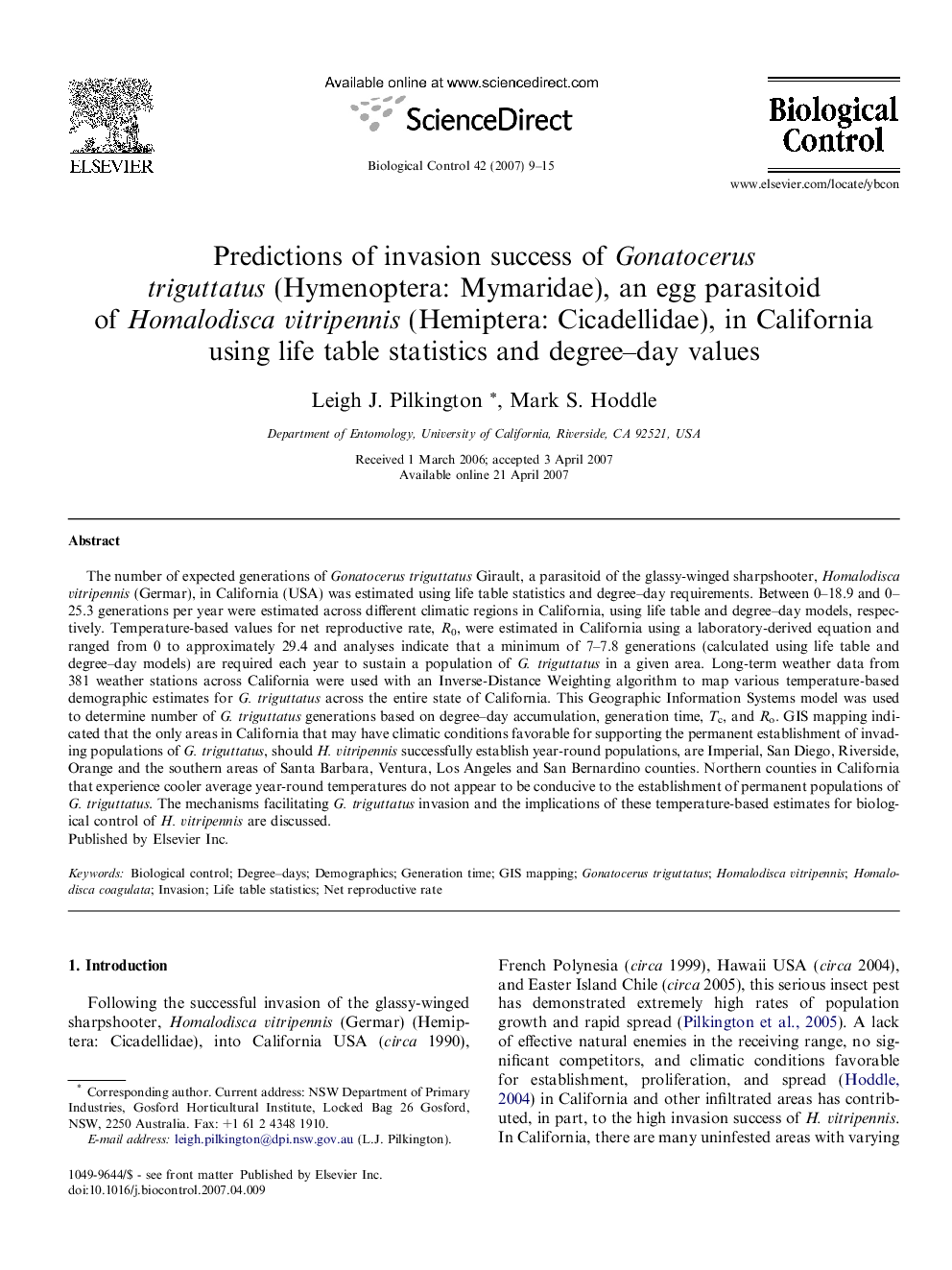| کد مقاله | کد نشریه | سال انتشار | مقاله انگلیسی | نسخه تمام متن |
|---|---|---|---|---|
| 4504995 | 1321121 | 2007 | 7 صفحه PDF | دانلود رایگان |

The number of expected generations of Gonatocerus triguttatus Girault, a parasitoid of the glassy-winged sharpshooter, Homalodisca vitripennis (Germar), in California (USA) was estimated using life table statistics and degree–day requirements. Between 0–18.9 and 0–25.3 generations per year were estimated across different climatic regions in California, using life table and degree–day models, respectively. Temperature-based values for net reproductive rate, R0, were estimated in California using a laboratory-derived equation and ranged from 0 to approximately 29.4 and analyses indicate that a minimum of 7–7.8 generations (calculated using life table and degree–day models) are required each year to sustain a population of G. triguttatus in a given area. Long-term weather data from 381 weather stations across California were used with an Inverse-Distance Weighting algorithm to map various temperature-based demographic estimates for G. triguttatus across the entire state of California. This Geographic Information Systems model was used to determine number of G. triguttatus generations based on degree–day accumulation, generation time, Tc, and Ro. GIS mapping indicated that the only areas in California that may have climatic conditions favorable for supporting the permanent establishment of invading populations of G. triguttatus, should H. vitripennis successfully establish year-round populations, are Imperial, San Diego, Riverside, Orange and the southern areas of Santa Barbara, Ventura, Los Angeles and San Bernardino counties. Northern counties in California that experience cooler average year-round temperatures do not appear to be conducive to the establishment of permanent populations of G. triguttatus. The mechanisms facilitating G. triguttatus invasion and the implications of these temperature-based estimates for biological control of H. vitripennis are discussed.
Journal: Biological Control - Volume 42, Issue 1, July 2007, Pages 9–15